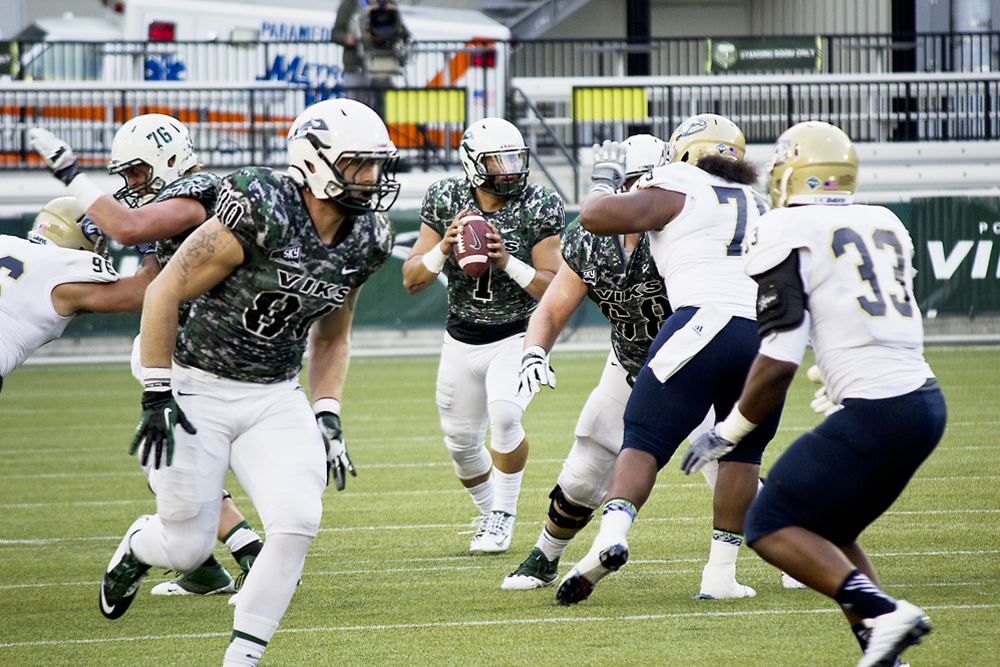A double-headed backfield is now commonplace in today’s football landscape, as the running back position often diverges into specialists: a speed player and a change-of-pace back to grind out yards and wear down the defense. This is a tried and true tactic that dominates NCAA football.
Operating a double-headed quarterback group, on the other hand, isn’t often a tactic that strikes fear into the hearts of opposing defensive coordinators. Not yet, at least.
Hometown hero Paris Penn and Washington native Kieran McDonagh battled for the starting QB spot last season—McDonagh winning out—but head coach Nigel Burton has come to a different decision this year: just split the snaps and let each player do what he can.
Much like teams employ a fast-cutting running back and a ground-and-pound counterpart, Burton is hoping Penn and McDonagh can act as the quick, run-first QB and pocket-savvy, passing QB, respectively.
McDonagh, a finalist for the Jerry Rice Freshman of the Year award in 2012, is entering his third season at Portland State and has already notched 20 career starts for the Viks. He looks to build off a strong season last year by improving his passing, rushing and efficiency numbers. 2014 is off to a strong start. In a pass-heavy attack against the Washington State Cougars, McDonagh dropped back over 50 times, completing 31 passes for 269 yards.
The 6-foot 1-inch Penn can frustrate coaches and defenses alike with his quick feet and elusive moves. Earlier this season, he scorched Oregon State for 112 yards on the ground, two touchdowns and a towering average of 12.4 yards per carry; unfortunately, the Beavers prevailed 29–14.
Penn’s dual-threat status isn’t reserved to his ability on the football field. He lettered three times in football and four times in baseball during an illustrious career at Grant High School.
Not to be outdone, McDonagh has proven he can lead and operate a high-powered offense, from high school throughout his collegiate career. A three-star athlete in high school, he was the first Viking QB to start every game his freshman year.
Though it’s clear each player has his strengths, neither player is one-dimensional. It simply depends on the defense the Vikings are facing and situational play calling. Having the luxury of lining up either player under center and keeping the defense guessing whether you’re going deep or running the option is an enviable situation.
By examining the play calling, it’s clear offensive coordinator Bruce Barnum has distinct roles for his two playmakers: McDonagh having thrown the ball six times as often as Penn, and Penn averaging three times more yards per carry than McDonagh.
Thankfully, each player is interested in doing whatever he can to help his team win games. With a 3–5 record, the vikings also hope to get Penn back into the rotation soon, as he’s sat out the last four games with a shoulder injury.






